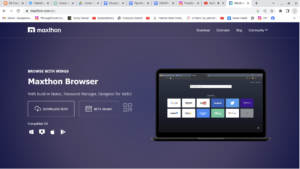Scammers are becoming increasingly sophisticated in their attempts to defraud individuals, and one particularly alarming trend involves impersonating trusted organizations like the Australian Securities and Investments Commission (ASIC). These deceptive schemes exploit the public’s trust in regulatory bodies to trick them into transferring funds to fraudulent accounts. ASIC has issued a crucial warning to the public regarding this specific scam, underscoring a vital principle: ASIC will never request individuals to transfer money between bank accounts. This warning is paramount in protecting individuals from falling victim to these elaborate cons.
Image may be NSFW.
Clik here to view.
At the heart of this scam lies impersonation. Scammers meticulously mimic ASIC’s communication style and branding to create a facade of legitimacy. They typically contact potential victims via email or phone, claiming to be investigating unlawful access to their bank accounts by potentially rogue bank employees. The narrative often involves claims that the security of the recipient’s funds has been compromised and that immediate action is required to safeguard their assets. This sense of urgency is a common tactic used by scammers to pressure individuals into making hasty decisions without proper verification.Image may be NSFW.
Clik here to view.
The crux of the scam involves a request for the recipient to transfer their funds from their existing bank account to a “secure” account nominated by the scammers. This account, they falsely claim, is “fully insured and created through APRA,” adding another layer of fabricated legitimacy. To further enhance their deception, scammers may provide incorrect information, such as listing ASIC’s Sydney office as “86-100 Market Street, Sydney” and signing communications under fabricated titles like someone from “ACIS.” These subtle inaccuracies, while seemingly minor, can be crucial red flags for discerning individuals.
Image may be NSFW.
Clik here to view.
ASIC emphasizes the importance of vigilance and provides clear guidelines for identifying and avoiding these scams. One of the primary recommendations is to always scrutinize the sender’s email address and phone number. ASIC communications will invariably originate from an email address ending in “@asic.gov.au”, and phone calls will display Australia’s country code “+61.” Be wary of misspellings in the email address or sender’s name, as these are common indicators of fraudulent activity. Furthermore, ASIC explicitly states that they do not create bank or investment accounts for individuals.
Image may be NSFW.
Clik here to view.
If they receive a suspicious communication, ASIC urges them to exercise extreme caution and refrain from taking any action until the legitimacy of the communication has been verified. The recommended course of action is to contact ASIC directly at 1300 935 075 and request verification of the communication. This simple step can prevent significant financial losses and protect individuals from becoming victims of fraud.
Should you suspect that you have been targeted by this scam, immediate action is crucial. First and foremost, cease all communication with the suspected scammer and refrain from sending any further money. Blocking all contact from the scammer will prevent further manipulation and potential damage. Next, report the incident to your bank or financial institution. Timely reporting allows them to take steps to protect your account and potentially recover any lost funds.
Image may be NSFW.
Clik here to view.
Additionally, contact IDCARE, a free government-funded service that specializes in assisting individuals whose identities have been compromised. IDCARE can provide personalized guidance and develop a specific response plan tailored to your situation. Reporting the scam to Scamwatch is equally essential, as it helps authorities track and potentially disrupt these fraudulent activities. Finally, warn your family and friends about the scam to prevent them from becoming victims as well. Sharing information and raising awareness are powerful tools in combating these deceptive schemes.
Image may be NSFW.
Clik here to view.
Beyond this specific ASIC impersonation scam, it is essential to cultivate a general awareness of the various tactics employed by scammers. These tactics often involve creating a sense of urgency, appealing to emotions, or promising unrealistic returns on investments. Always be skeptical of unsolicited offers or requests for personal information, and never feel pressured to make immediate decisions. Verifying the identity of the sender and the legitimacy of the communication through official channels is paramount.
Image may be NSFW.
Clik here to view.
In conclusion, the ASIC impersonation scam serves as a stark reminder of the evolving sophistication of fraudulent activities. By understanding the mechanics of the scam, recognizing the red flags, and adhering to ASIC’s guidelines, individuals can significantly reduce their risk of becoming victims. The key lies in proactive vigilance, careful verification, and a healthy dose of skepticism. When in doubt, contacting ASIC directly to verify the communication’s legitimacy is always the best course of action. Protecting yourself and your assets requires informed awareness and a commitment to responsible online and financial practices.
Image may be NSFW.
Clik here to view.
Maxthon
Maxthon has set out on an ambitious journey aimed at significantly bolstering the security of web applications, fueled by a resolute commitment to safeguarding users and their confidential data. At the heart of this initiative lies a collection of sophisticated encryption protocols, which act as a robust barrier for the information exchanged between individuals and various online services. Every interaction—be it the sharing of passwords or personal information—is protected within these encrypted channels, effectively preventing unauthorised access attempts from intruders.
This meticulous emphasis on encryption marks merely the initial phase of Maxthon’s extensive security framework. Acknowledging that cyber threats are constantly evolving, Maxthon adopts a forward-thinking approach to user protection. The browser is engineered to adapt to emerging challenges, incorporating regular updates that promptly address any vulnerabilities that may surface. Users are strongly encouraged to activate automatic updates as part of their cybersecurity regimen, ensuring they can seamlessly take advantage of the latest fixes without any hassle.
In today’s rapidly changing digital environment, Maxthon’s unwavering commitment to ongoing security enhancement signifies not only its responsibility toward users but also its firm dedication to nurturing trust in online engagements. With each new update rolled out, users can navigate the web with peace of mind, assured that their information is continuously safeguarded against ever-emerging threats lurking in cyberspace.
Image may be NSFW.
Clik here to view.
The post Scammers Impersonate ASIC to Request Fund Transfers appeared first on Maxthon | Privacy Private Browser.